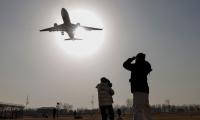Generally, historians recognised the contribution of elite classes such as royal dynasties, the aristocracy and feudal lords but ignored the role of traders in making and enriching history.
In ancient and the medieval period, traders were not given the social status they had deserved. According to Aristotle, they earned wealth without labour because they purchased commercial goods on cheaper rates from one place and sold them on higher prices at another place.
Traders were also accused of violation of all moral values for the sake of profit. Therefore, they were regarded as greedy and dishonest. In comparison to the aristocracy, they were not respected in society because – despite having wealth – they did not belong to any aristocratic family and did not wield any power and authority.
Now historians have turned their attention to highlighting the contribution of traders who endured long and arduous journeys from one place to another after facing robbers and bandits, sometime being deprived of their goods and sometime facing barbarian tribes just to reach their destination. It was a great achievement for merchants to reach far-off and unknown places.
The credit goes to them for having discovered and introduced different cultural values, customs and habits of alien nations, thereby making the world’s civilisation rich and fertile. Moreover, their contribution to language is praiseworthy because they entered new vocabularies to different languages wherever they went. However, besides such commercial and cultural exchanges, the traders also brought germs of various diseases which caused pestilence and plague. Therefore, on the one hand, trade brought prosperity to different societies but on the other hand, society also occasionally suffered.
Those traders who conducted trade by sea discovered the monsoon winds and travelled in the Indian Ocean to reach unknown countries along with their trading goods.
Traders brought the kind of goods to their homeland that were essentially required by people. For example, they exported olive oil from Greece and brought back wheat in exchange. In Egypt, they brought timber from Lebanon which was used in the building of pyramids and houses. They satisfied the desired of the rulers and the aristocrats by selling them luxurious goods such as diamonds, precious stones and some rare goods which were displayed to show wealth and power.
The palace of of the Persian king at Persepolis was decorated and furnished by foreign material which was supplied by traders. They brought silk and porcelain from China, in great demand in the Roman markets. Thus trade benefited countries.
To facilitate the traders, rulers built Caravanserais where they could stay for rest and continue their journey further. The building of Caravanserais was surrounded by high walls and a gate. It contained rooms for the merchants and warehouses for their merchandise along with space for animals. Caravanserais became the meeting place for traders belonging to different countries. In the evening, they shared tales of their travels and experiences. In India, Sher Shah Suri (r 1538-1545) built Caravanserais for traders. There were separate arrangements for Hindus and the Muslims. This act promoted commercial activities in India. The Caravanserais built by the Mughals and their ruins are scattered around the Subcontinent.
We should not forget the role of the beasts of burden which were used to take heavy goods to far-off places. During the Assyrian Rule, traders used donkeys and mules to carry trading goods up to Asia Minor. Bactrian camels played an important role in the trade between Central Asia and China. The characteristic of this camel was that it could carry a heavy burden after drinking a large quantity of water and could travel four consecutive days without drinking water.
Before European traders, Arab traders controlled the trade through the Indian Ocean. Their merchant ships reached South India, Sri Lanka, Indonesia and China. In South India, they had their own separate settlements, and were patronised by the local rulers. The present generation of these traders is known as Moplas.
In China, they had their settlements in the port of Canton. Whenever there was a conflict between Muslim traders and the local population, they took refuge in the Island of Java. The spread of Islam in Indonesia was the result of these traders who settled there because of their social and commercial activities and gradually the local population converted to Islam.
Some Muslims travellers visited South India and China and narrated their experiences about the commercial activities of traders. In the 15th century when the European traders arrived in Africa and Asia, they brought weapons along with trading goods and used trade to expand their political domination. Their presence in the Indian Ocean expelled the Arab traders and reduced their commercial activities.
The monopoly of Europeans in the Mediterranean region as well as in the Indian Ocean paved the way for European Imperialism. The days of peaceful commercial activities were over and the Europeans introduced violence and coercion along with their commercial interests.
The writer is a veteran historian and scholar.
Studies have established that most effective interventions for improving quality of education is to train teachers
For Pakistan, 2025 must be year of decisive action and vision
Mpox is caused by monkeypox virus which belongs to family of viruses that includes smallpox virus as well
This digital shift represents profound change, but it also brings with it significant challenges
Benazir Bhutto, like Indra Gandhi in neighbouring India, did not have to start from scratch
Workplace therapy has tangible benefits like improving mental well-being as well as productivity







